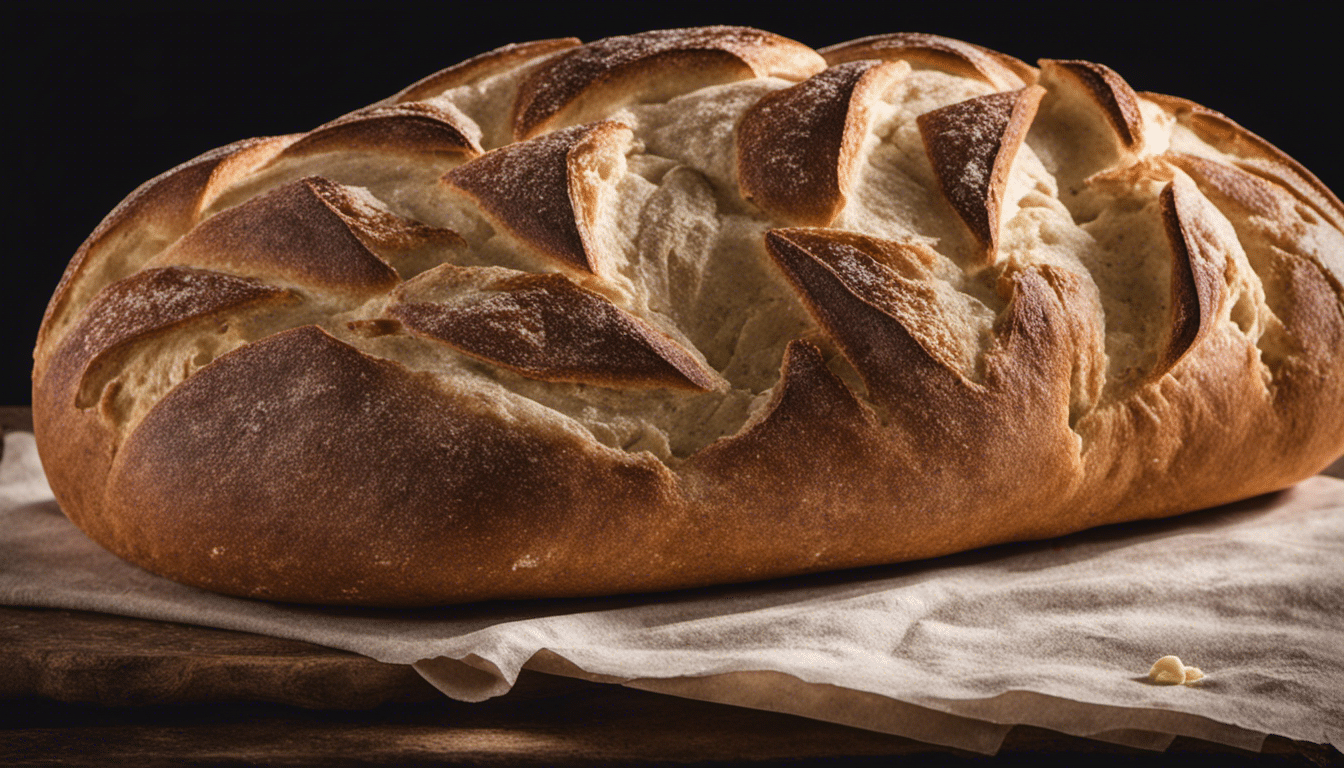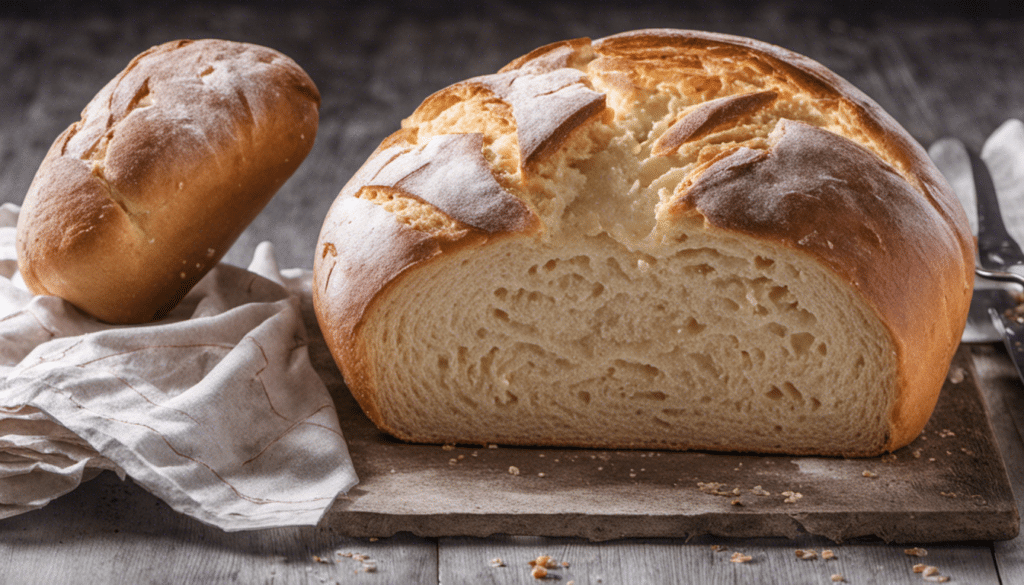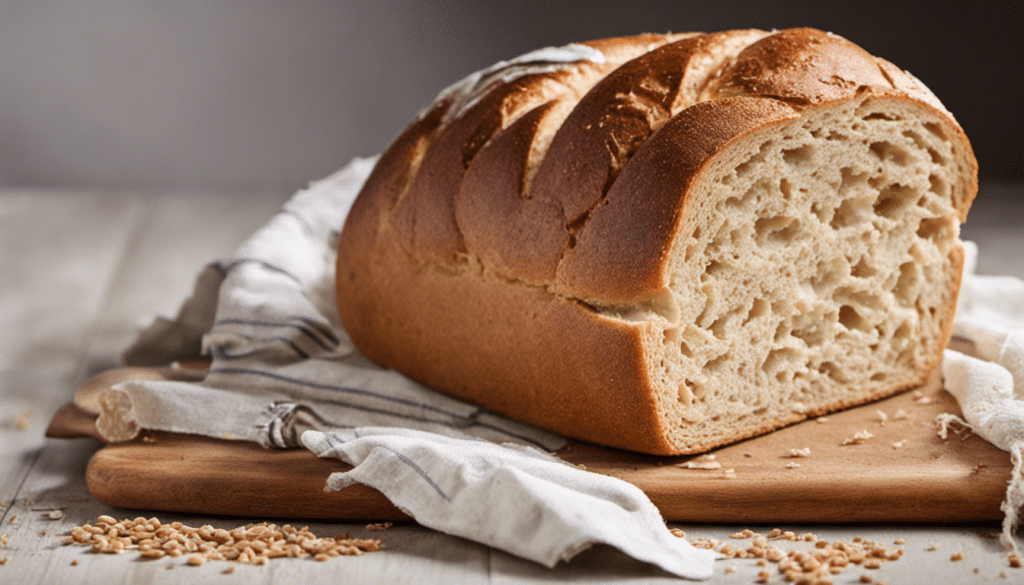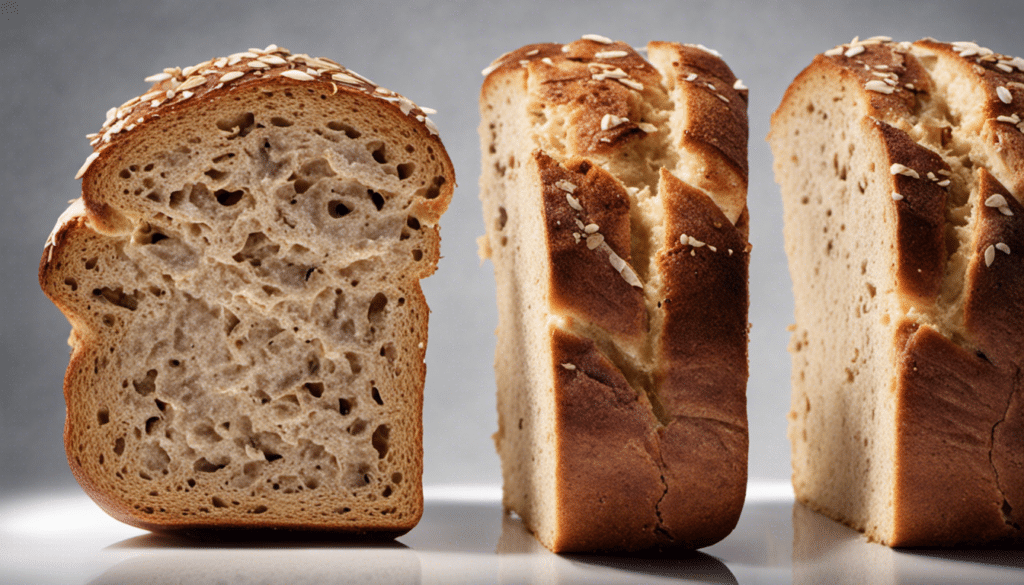| Prep: 20 mins | Cook: 45 mins | Difficulty: Medium | Serves: 6 |
| 4 cups of durum wheat flour | 1 tablespoon of fine sea salt |
| 2.5 teaspoons of active dry yeast | 1.5 cups of warm water |
| 2 tablespoons of extra-virgin olive oil |
| kcal | fat | saturates | carbs |
| 252 | 3g | 0.4g | 48g |
| sugars | fibre | protein | salt |
| 0g | 1g | 8g | 0.87g |
About Pane di Altamura
There’s something inherently magical about Italian breads, and Pane di Altamura is no exception. It’s a traditional category of bread that hails from Altamura, a city nestled in the southern Italian region of Apulia. Renowned for its distinct nutty taste and a featherlight crumb encased in a golden, crispy crust, this bread is a testament to simple ingredients transforming into culinary artwork. Entrenched in centuries-old traditions, Pane di Altamura occupies a special place on any Italian table and indeed, in the hearts of bread lovers worldwide.
The Story behind Pane di Altamura
Pane di Altamura dates back to the Roman times, a fact attested by Horace who remarked upon the bread’s exceptional quality and flavor. It is one of the few types of bread in Europe to have received the Protected Designation of Origin (PDO) status from the European Union. This means that genuine Pane di Altamura can only be made in the Altamura region using a set list of local ingredients and adhering to traditional baking methods.
The Hallmarks of Pane di Altamura
The key to Pane di Altamura’s unique flavor and texture lies in the quality and specificity of its ingredients. It stars durum wheat flour, lending the bread its trademark yellow hue and characteristic fragrant taste. The yeast imparts an organic, wholesome aroma that is a delightful contrast to the bread’s crackly exterior.
But the true distinction of Pane di Altamura lies in its novel method of preparation that involves an intriguing double-leavening process. The dough is allowed to rise twice to create that airy, bubbly interior that true bread enthusiasts covet. Further, it’s typically baked in a wood-fired oven — a step that bestows the bread with a perfect golden-brown crust and a subtle smokiness.
Pane di Altamura and the Art of Pairings
Simultaneously rustic and refined, Pane di Altamura lends itself to a variety of culinary applications. Due to its hearty texture and earthy flavor, it pairs beautifully with a range of rich, robust dishes. Rip a chunk of this bread and tuck into a bowl of traditional pasta e fagioli, or pasta and beans. The bread absorbs the broth beautifully, elevating the overall taste of the dish.
Alternatively, place a warm, thick slice of Pane di Altamura under a juicy, tender steak, allowing the bread to soak up the succulent juices. The nutty undertones of the bread beautifully complement the savory meat, creating a meal that’s sure to satiate the discerning palate. Pane di Altamura is also perfect as the foundation of a classic bruschetta, slathered in garlic and ripe tomatoes.
Whether you’re a seasoned chef or a home cook with a penchant for artisanal breads, Pane di Altamura is an incomparable culinary treasure. Its age-old legacy, coupled with its simplicity and depth of flavor, make it a bread worth its weight in gold.
What You’ll Need
- 4 cups of durum wheat flour
- 1 tablespoon of fine sea salt
- 2.5 teaspoons of active dry yeast
- 1.5 cups of warm water
- 2 tablespoons of extra-virgin olive oil
Method
Step One
First, you need to activate the yeast. Pour the warm water into a small bowl and sprinkle the yeast on top of it. Allow it to sit for about 5-10 minutes or until it becomes frothy.
Step Two
In a large mixing bowl, add the durum wheat flour and fine sea salt. Stir to distribute the salt evenly throughout the flour.
Step Three
When your yeast is ready, pour it into the flour mixture. Follow this with the extra-virgin olive oil.
Step Four
Start to mix the ingredients together with your hands or a wooden spoon. Once the dough starts to come together, you can begin to knead it. The dough should be slightly sticky but manageable. Knead for about 10 minutes on a lightly floured surface, or until it’s smooth and elastic.
Step Five
Once your dough is kneaded, put it in a lightly oiled bowl, cover it with a damp cloth, and let it rise until it has doubled in size. This should take about 1-2 hours.
Step Six
After the dough has risen, preheat your oven to 425 degrees Fahrenheit (220 degrees Celsius). If you have one, place a pizza stone on the middle rack to heat up as well.
Step Seven
Shape your dough into a loaf, then place it on a pizza peel or upside-down baking sheet dusted with a little flour. Let the loaf sit for about 15 minutes to relax the dough.
Step Eight
Place the loaf onto the heated pizza stone or baking sheet in the oven. Bake for about 25-30 minutes, or until the crust is golden brown. Remove the bread from the oven and let it cool before slicing and serving.
The Pane di Altamura is now ready to serve, enjoy your meal!




